It’s pretty daunting buying your first horse. You’ve probably read and heard about how difficult it is.
And I’m not going to tell you otherwise! After a couple of years where I haven’t owned a horse, I’m looking at buying one in the new year. I know it’s going to be a complicated and expensive process.
But I figured why not make the most of this opportunity, and share my expertise – while I’m going through this myself.
This is the simplified process I would go through when buying a horse. For a more detailed approach including the exact steps from start to finish I took to buy Rudy and all the budgeting involved including exactly how much I spent, check out this guide: How to Buy Your First Horse.
The tips in this post will help you with the following:
- Where to start in terms of actually finding a horse
- How to make sure the horse is a good match for you
- All the expected and unexpected expenses of owning your new horse
- How to get everything ready before buying your first horse to decrease stress levels when your new horse comes home (or goes to his or her new boarding home)
Step 1 – The Horse
The first thing that you should start doing before all else is start actually looking at horses.
Start by looking on the internet at places near you that breed and sell horses. You can also look on directories and even places like Ebay or Kijiji.
There are great horses to be found everywhere if you go through all the proper steps before you actually buy.
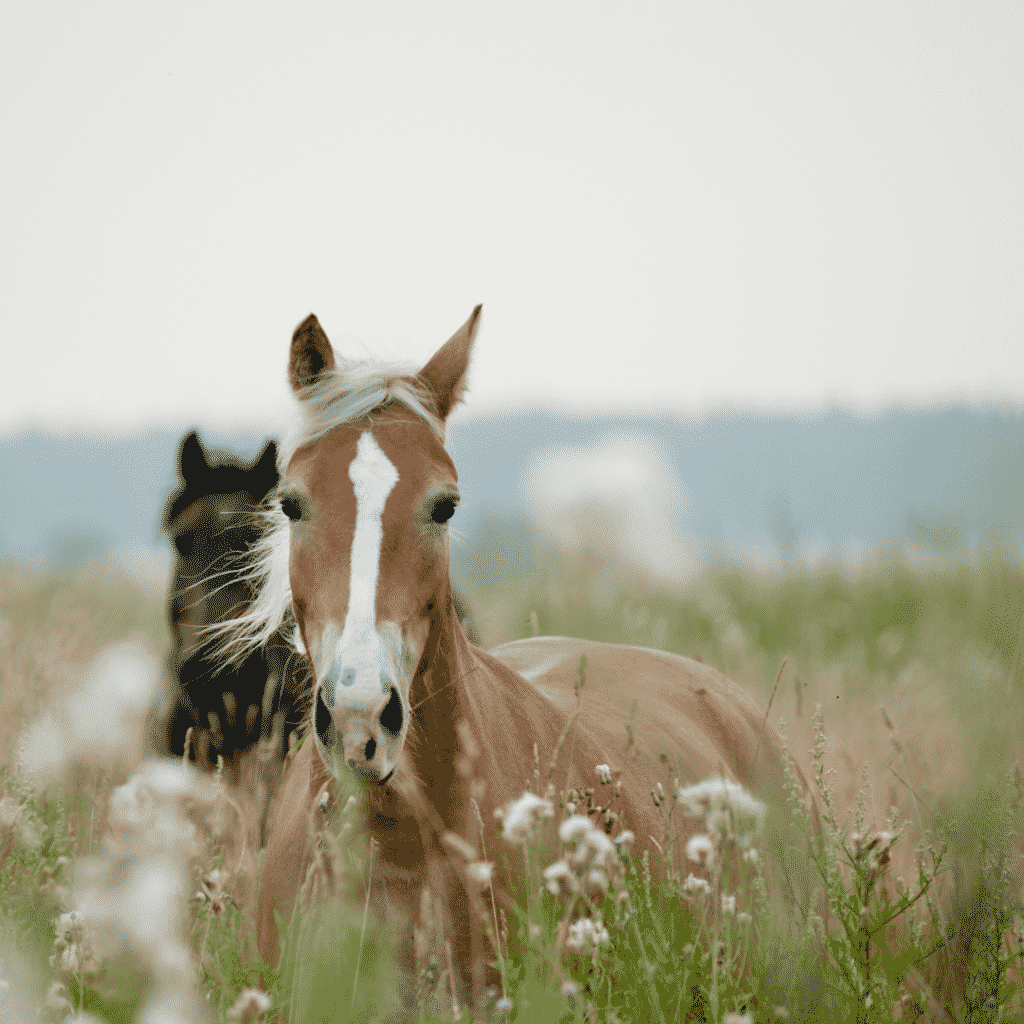
I would make a document someplace on your computer or write down a list of all the places online that you’ve found that seem to have horses that might be a good fit for you.
Buying Your First Horse: Don’t Shy Away from Older Horses!
If this is your first horse, even if you are an experienced rider, it makes sense to start with a very gentle, well tempered and well trained horse.
I would really encourage you to try and find an older horse. If you can find an older school horse that’s a great place to start. An additional bonus is that these horses are usually not too expensive.
Even if you are specifically looking to compete in a high level sport, then you are still better off to buy a horse that’s well trained if it’s your first one.
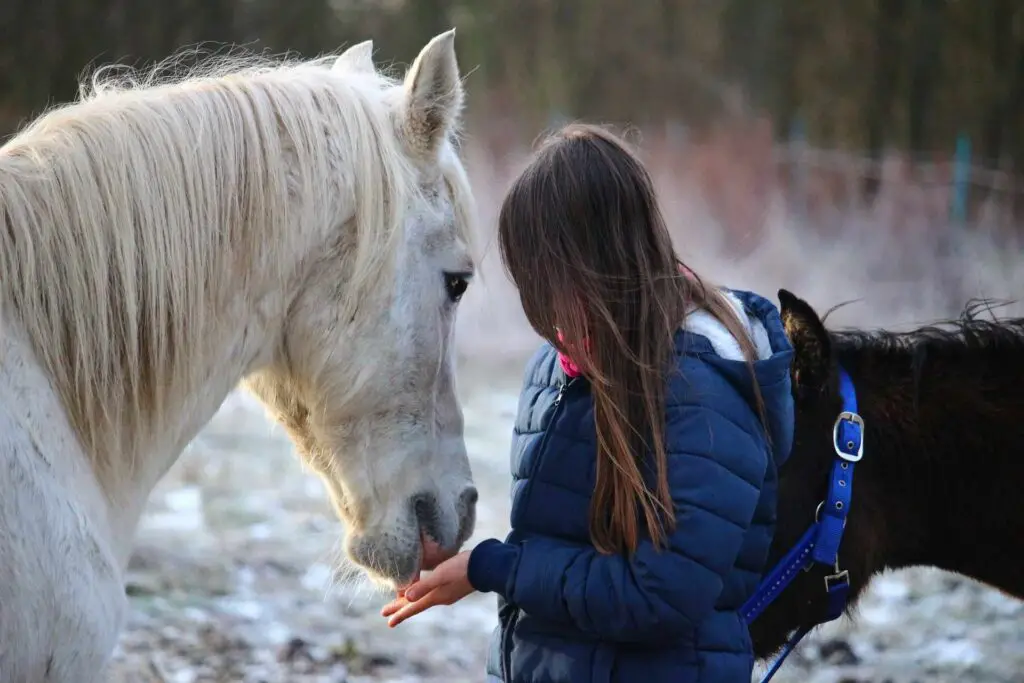
If you’re riding at a stables, you could approach the owner and ask if they’re thinking of selling, or if they know anyone who is. The worst thing they can say is no!
The Trainer Makes the Horse
The exception to this is if you are working with an experienced trainer that will help you train your horse.
Finding a great trainer to work with when you buy a new horse is also an excellent way to get started as a horse owner. Training a horse can help to create an extremely strong bond – but only when done properly.
As a first time horse owner, it is probably not a good idea for you to try to do this yourself the first go around.
Breeds and Colours: Nice to Have
If there is a certain breed that you want, then you can list the websites and sources by breed. I’ve recently been looking a lot at curly horses and here are some websites I found (not that I need another horse :):
- https://www.floralakecurlyhorses.com
- http://www.whirlwindcurlies.com
- https://curlyhorse.com/
- http://www.hcrcurlyhorses.com
You can look through them, check out the horses for sale, learn about the farm’s training practices, and see their stallions and herds. If you really like them, I would definitely recommend visiting in person.
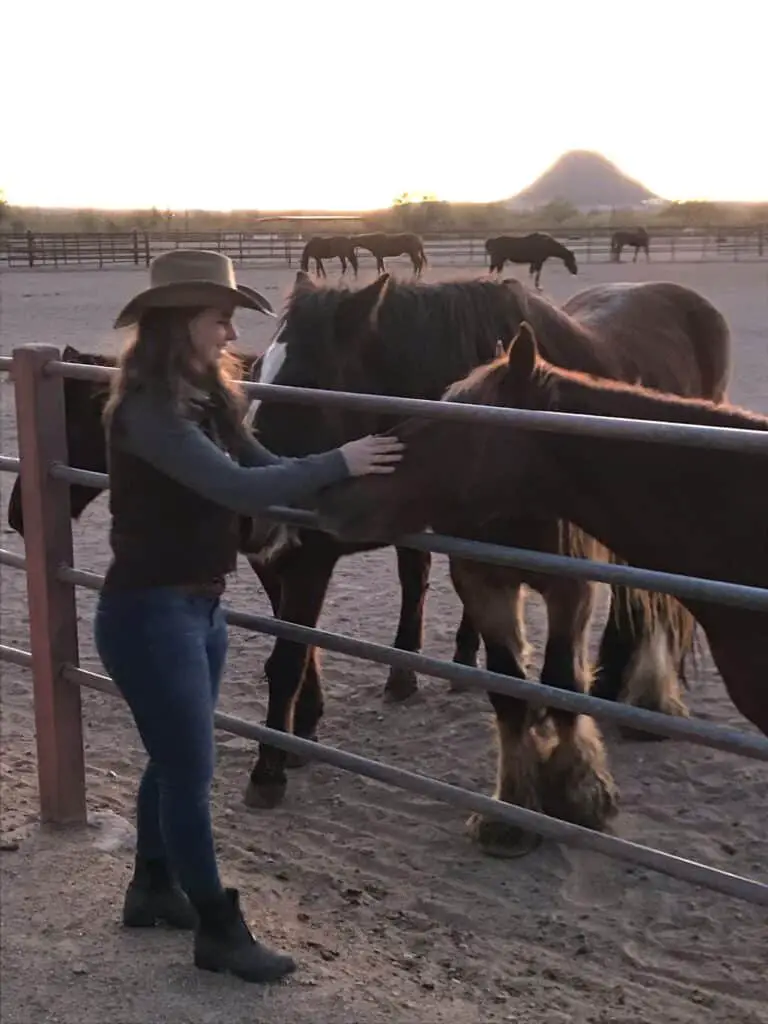
But I do want to give a little word of caution. When you’re buying your first horse, finding one that suits your experience is much more important than finding a particular breed or color.
If you have a couple of options that all suit your experience, have good temperaments, and tick boxes on price, then definitely go for the breed or color you like best. Just don’t let it put you off an otherwise perfect horse!
Buying Your First Horse: How Much Should You Spend?
Alright, so I don’t want to be too prescriptive here. Horses are expensive, definitely, and you should be prepared for that. But buying your first horse will be different for everyone. So instead, I’ll just give you an example.
Let’s say you’re looking at a nice, older school horse. Depending on their health and condition, you would probably be looking at paying between $3000 and $6000 (in USD). I’ve included in that figure a margin for transportation to wherever the horse will be boarding, so that’s a give or take.
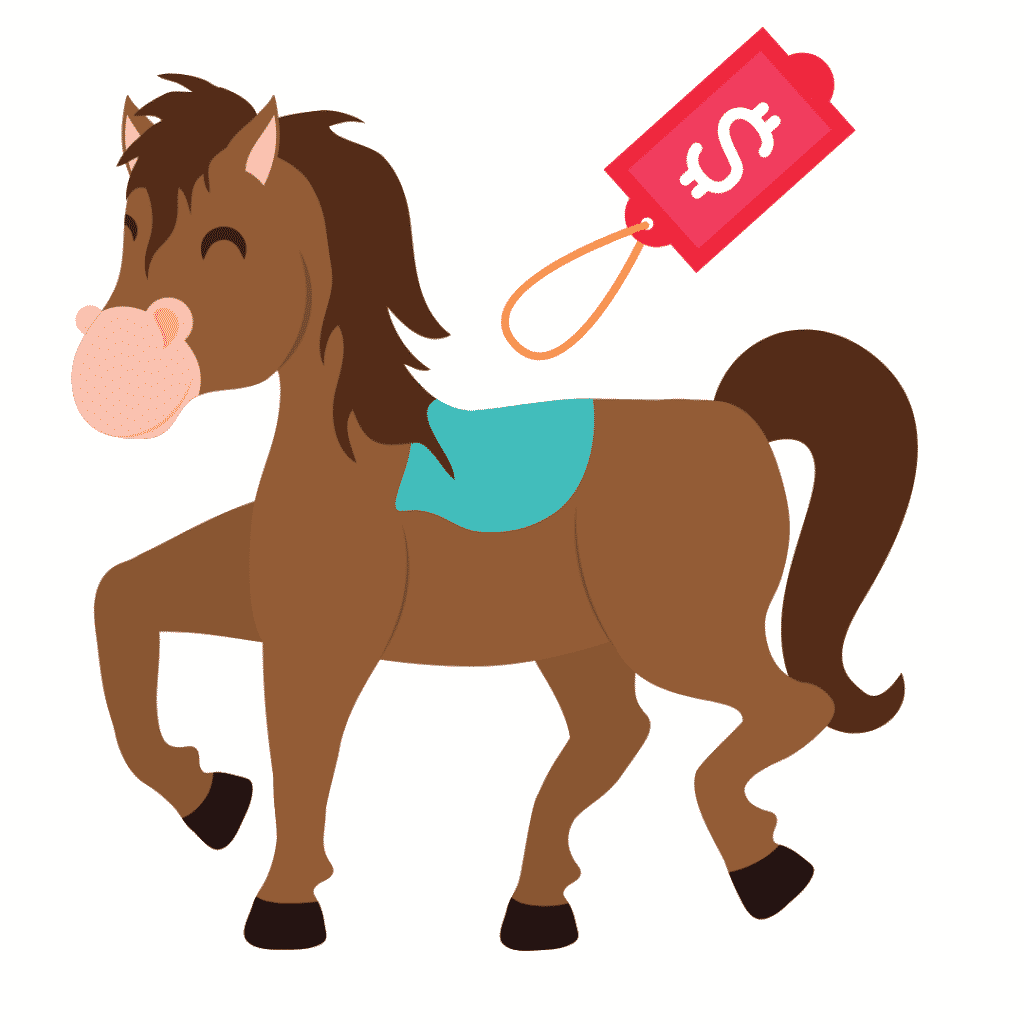
Other horses will be different: younger horses tend to go for more, and certain desirable breeds have higher price tags. In the more competitive riding world, lineage is everything, so the descendants of certain horses will cost more than others.
Once you start to get an idea of what kind of horse you’re looking for and the price range, you can start reaching out to different places and setting up meetings.
Buying Your First Horse: Summary Checklist
I’ve put together a checklist for you to use before you buy your first horse. Sometimes in the heat of the moment, it’s easy to skimp on the details.
After all, you’re so excited to finally bring your horse home (or to the boarding stable) with you!
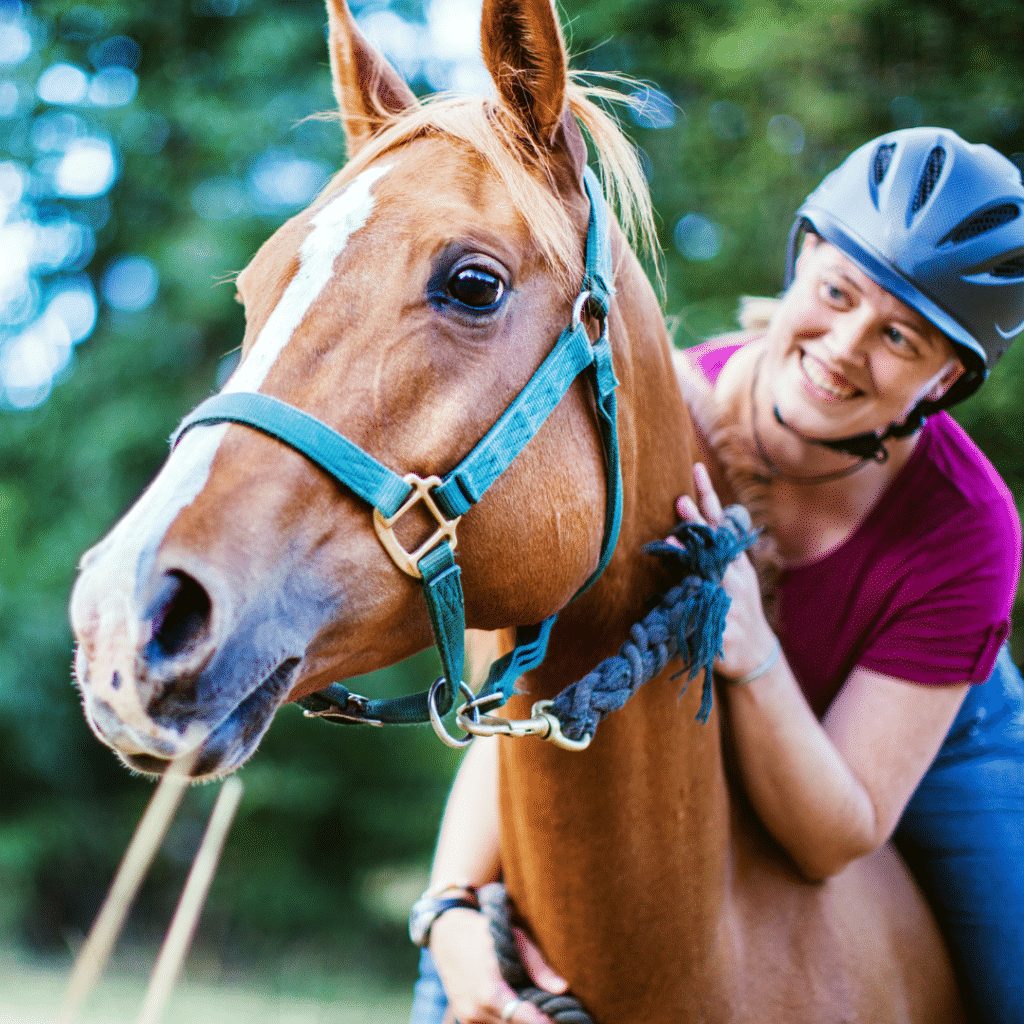
Checklist before you buy your horse:
- Go and see the horse, interact with the horse, ask to groom him, lead him around, ride him, etc. It’s not a good sign if the owner only wants you to look at the horse in the field. You need interaction – don’t be shy! It’s common to even ask for a trial period, so you can get to know each other really well before committing.
- When you meet the horse, try to ask the owner these questions:
- Is there any special bit that you use with them?
- What kind of feed are they on? Anything special thing they require, or any supplements?
- How are they in the paddock with other horses? Anything to note about keeping them?
- Are they okay to be turned out? Are they okay with being caught from the field? Are they dominant with other horses?
- Have they been vetted recently?
- Have they had any soundness issues or colic/ulcers?
- Have they ever been on any meds or calming supplements?
- Are they usually the same on and off the property?
- Any buck/bolt/spook?
- Get a vet check for the horse.
- Ask who the dam and sire are, ask about registration, and ask about breeding rights.
- Ask about transportation after purchase – will they help you move the horse to her new home or do you have to come and get them?
Step 2 – The Tack
The next big thing you need to plan for is buying tack for your horse.
You might get lucky, and be able to buy some of this stuff as part of the package when buying your first horse. Even if you can’t, I would recommend asking the previous owner about their sizes – it’ll save you having to re-measure your horse yourself. Although if you do have to, I have great guides on how to measure for a bridle, saddle and a blanket.
The actual tack that you’ll buy will depend on your style of riding. Here’s a sample for if you’re riding English:
- Saddle: Usually you’ll be looking at spending between $500 and $750. However, you might be able to get one second hand.
- Bridle: Bridles can cost anywhere between $50 and $150 new.

Other Equipment You Might Need Buying Your First Horse
There are a few other pieces of equipment you might need to invest in:
- You’ll want to buy a bit for your horse.
- You may also want to buy a saddle pad if you’re riding English. For Western, saddle bags might be something you want.
- Depending on the climate you live in, you may want to buy a blanket for them.
- You’ll definitely need some grooming supplies, to keep them looking spiffy.
Step 3 – Boarding or Housing
Now we’ve talked about the horse and its tack, you need to think about where your horse is going to live.
You have a couple of options on this one: boarding at a nearby farm or stables, or living with you.
Boading at a Nearby Farm
Many horse owners will board their horses either at a farm or stables nearby. Unfortunately, most of us just don’t have the space available or the right lifestyle to keep a horse on their property.
And do you know what? That’s okay.
Boarding your horse has a couple of advantages to it. Your workload will be a lot lower, for one – even though you’re responsible for your horse, depending on your arrangement the stables might feed them and muck out their stall for you.
Additionally, lessons or training can usually be bundled with a boarding fee at a sufficiently big equestrian facility. So that’s a win!

But of course there are some disadvantages to boarding. You’re not as close with your horse – you’ll have to drive to go see them.
There’s also the expense.
How much it will cost will depend on the level of service you’re getting. Something really basic could be as little as $200 a month. But for full care, along with lessons and training, you’ll be looking at upwards of $1000.
Housing on your Property
Alright, so in contrast, the advantages of having your horse at home are that:
- Your horse will be super close to you!
- You have control over their care, feeding and turnout schedule.
- You can work with your horse on your own schedule. There’s no need to worry about the scheduling of other boarders.
But of course there are corresponding disadvantages to having your horse at home:
- For one, the workload is a lot higher. You’re responsible for everything!
- You have to trailer your horse to get riding lessons or training. That is unless your coach or trainer will come to you.
- If you are missing any equipment or facilities (i.e. a jumping arena, trails) you either have to trailer to those locations or you have to install them.
But let’s say that you’re okay with that. What do you actually need to keep a horse?
Your climate will determine the type of facilities you might need. You’ll definitely need some kind of shelter, no matter what. But if you’re somewhere really cold, you might need a fully indoor barn.
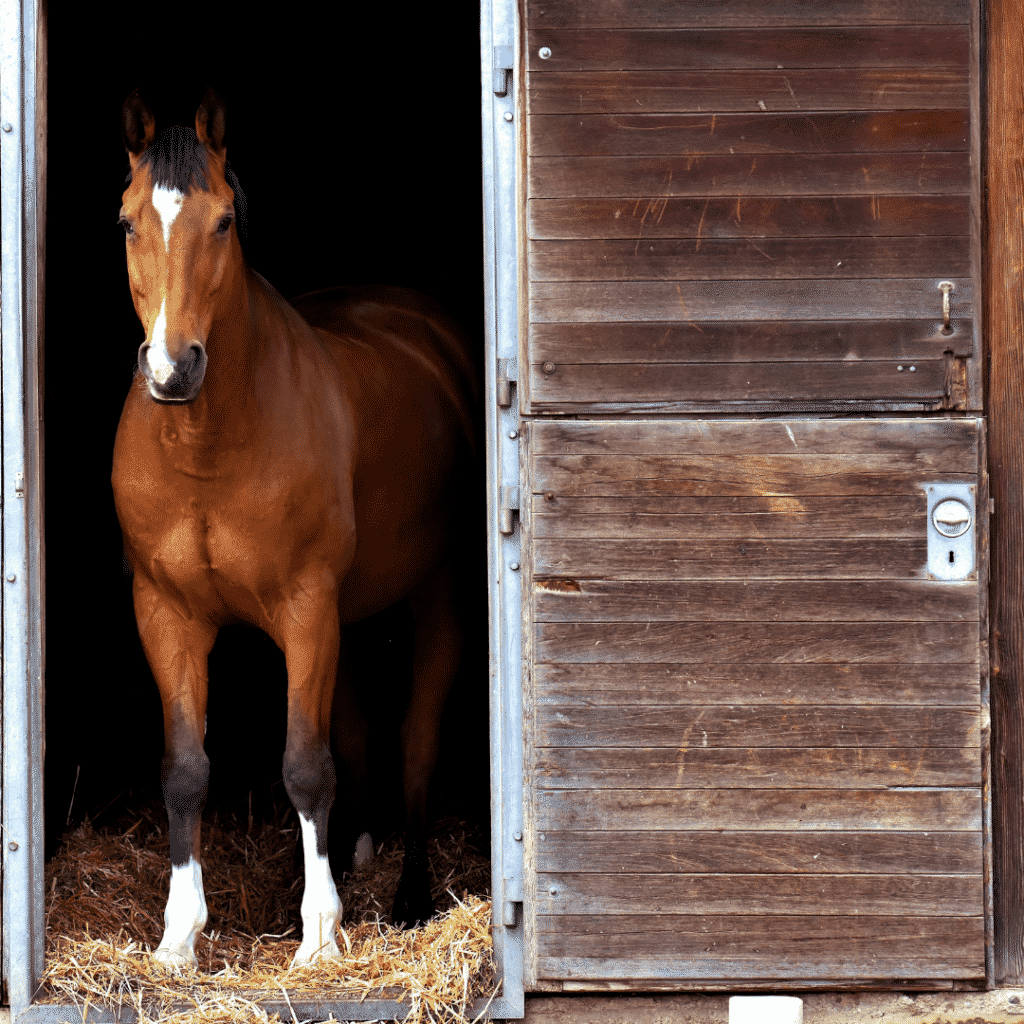
Your pasture requirements will depend on the number of horses you keep. It’s recommended that you have at least one acre per horse for sustainable pasturing.
You’ll also need good access to water for your horse – hydration is key!
There are also a couple of hazards you want to keep an eye out for when choosing the site of your paddock – things like poisonous plants, unstable terrain and even holes. Having someone experienced in to take a look would be well worth it, I think.
Step 4 – Budget for Health Bills
Your horse’s healthcare is going to be your biggest ongoing expense. Tack and equipment (and of course actually buying your first horse) cost a bunch up front but it’s the health bills that persist.
Food, Supplements & More!
You need to make sure your horse has adequate feed. The amount it needs will be proportional to the work it’s doing and your horse’s size. Generally, they should be getting 1.5 to 3 percent of their body weight in roughage (grass or hay) per day.
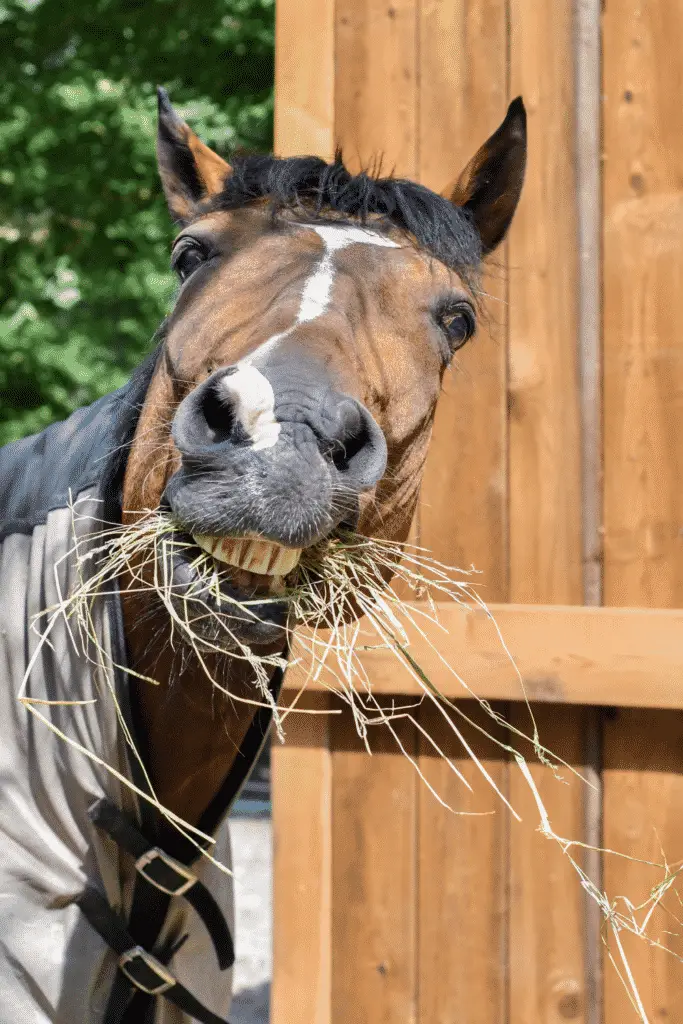
Now, if you’ve got a good paddock like we discussed above, your horse should be able to get a lot of their feed by grazing. But in winter (or a dry summer) you might need to supplement their diet with hay. You should also do this if your horse isn’t getting a lot of turnout time.
You can also feed your horse grain, but if you do make sure to feed it to them in small, frequent meals.
If you haven’t got a lot of access to pasture, or if you notice your horse is having joint or skin problems, you might want to look into providing them with some supplements too.
Vet Bills
Horses are more than a little notorious for being illness-prone.
Now of course there’s a chance you’ll get lucky (or pay well) for a horse with good genes, who doesn’t get sick often. But there’s a chance you won’t – and you should always be prepared for that.
Even a healthy horse needs vaccinations and de-worming. You’ll be looking at about $500 annually for those sorts of appointments, and more if your horse develops other health issues.
I mean I think it’s worth it, but it’s best to be aware of these costs before buying your first horse!
Farrier Bills
Generally it’s recommended that your horse sees a farrier once every six to eight weeks – but this is highly dependent on how fast their hooves grow.

If they throw a shoe, you’ll obviously need to see the farrier sooner.
Your farrier bills will depend on whether your horse has shoes or not. A trim of the hooves will be around $40 per visit, while applying or resetting shoes will cost about an additional $80.
Step 5 – The Trailer & Truck
If you don’t think you need to buy your own trailer, then you should still try to have a trailer available to you.
Even if you don’t think you’ll need to be moving your horse around very much, it’s still important to trailer train them and keep them used to getting in and out of a trailer whenever they do need to go somewhere.
Unless you’re buying a completely green horse, the horse will have to be somewhat used to a trailer in order to get to your land or wherever you are boarding them. If a horse isn’t trailered at all in a long time, however, they might get scared when it comes time to take them someplace the next time. For this reason it’s good to have one around or access to one.
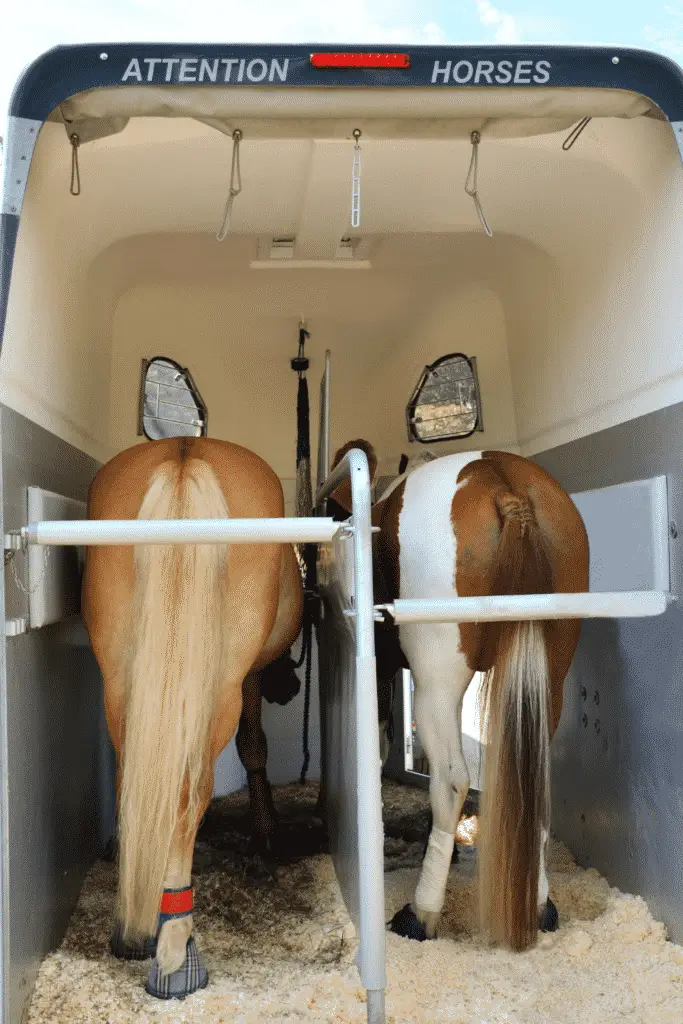
Trailers can definitely be expensive. I’m not the biggest expert on them but much like buying a truck or a car (as I’ll get to below in a second), it’s good to do your research and due diligence when getting a trailer. Make sure you don’t buy anything USED online without going to see it and test it out first!
Sometimes when buying your first horse, trailering to your barn of choice is included or can be negotiated upon so you don’t need to buy or have access to a trailer right away.
Double D Trailers is my favourite trailer company
They offer flat rate shipping across the US and the best part is that you can build your own custom trailer online and then they’ll ship it out to you!
Brad, the owner of Double D Trailers, is also available by e-mail almost all the time you have any questions or concerns. Don’t hesitate to e-mail him and ask him anything about your first trailer as he’s super friendly.
Why do you need to buy a truck?
A truck isn’t really a necessary purchase when you’re buying your first horse but it can make things more convenient.
If you are also buying a trailer, you need something that will be able to tow it. But even if you aren’t going in for a trailer, you’ll need a vehicle capable of transporting things like your tack, grooming supplies and feed. It won’t be impossible without a truck or van, but I’m not going to say it’ll be easy either.

Having a truck and a trailer start becoming more of a necessity if you’re planning on showing your horse. Alternatively if you’re keeping your horse at your own land but you don’t have a riding arena or trails, you’ll need to trailer to them.
There are tons of reasons why you might want to move around your new horse and this becomes much trickier if you don’t have a truck and trailer combination with which to do so.
Good Luck Buying Your First Horse!
I hope you’re now feeling a little better informed about buying your first horse. It’s a complicated but really exciting process, and I wish you all the best for it!
I’ve tried to cover off the big important things, but I’m sure I’ve missed a couple of small ones. And in fact, I have a set of 10 questions that people often forget to ask when buying a horse, which you should check out.
But anyway, if there’s anything more you want to know, shout out your questions and suggestions in the comments!
Happy riding 🙂

